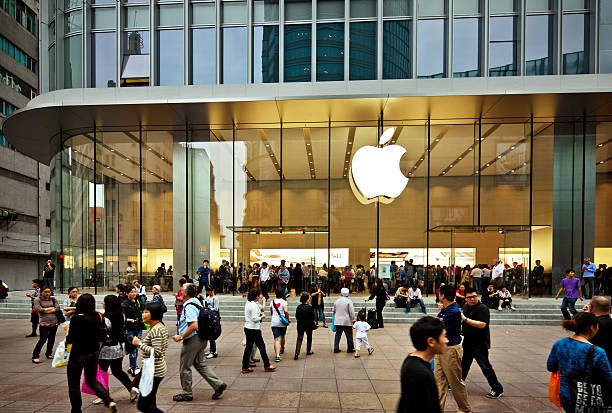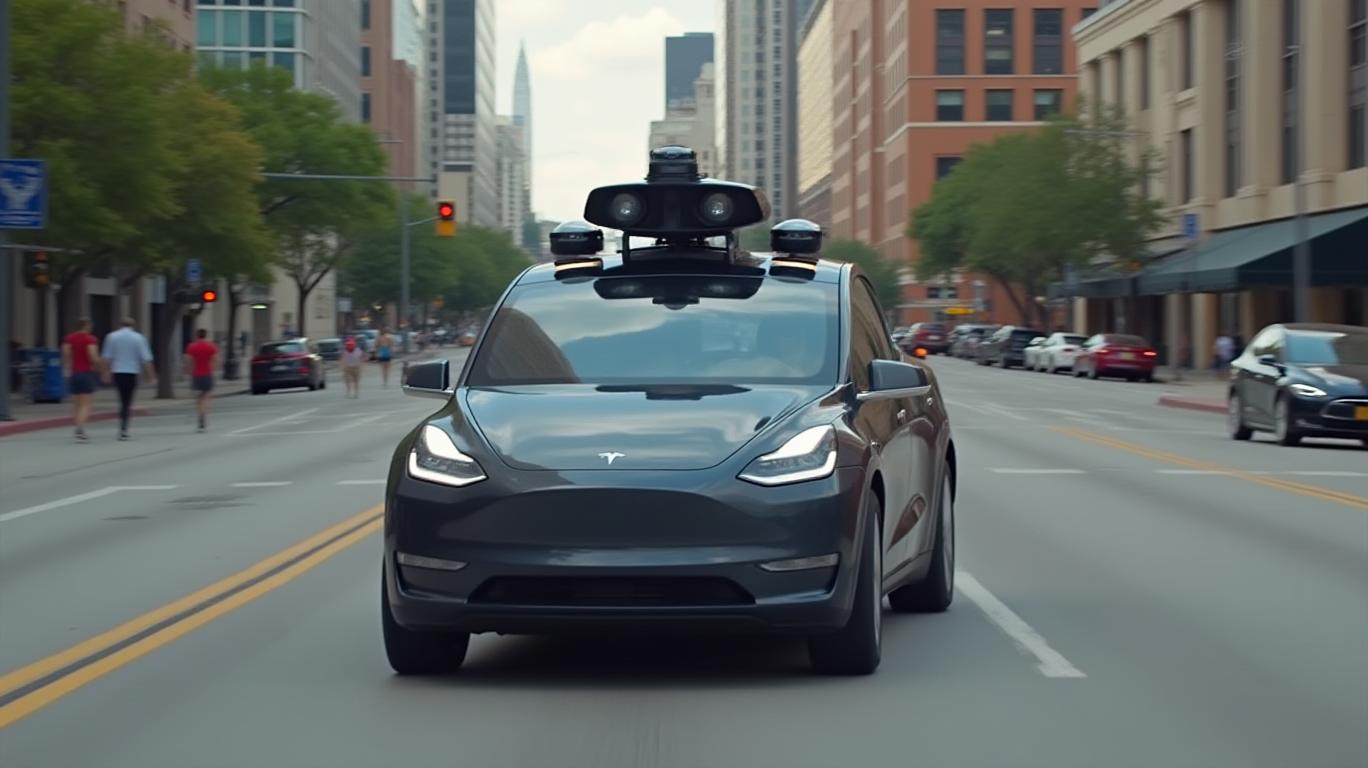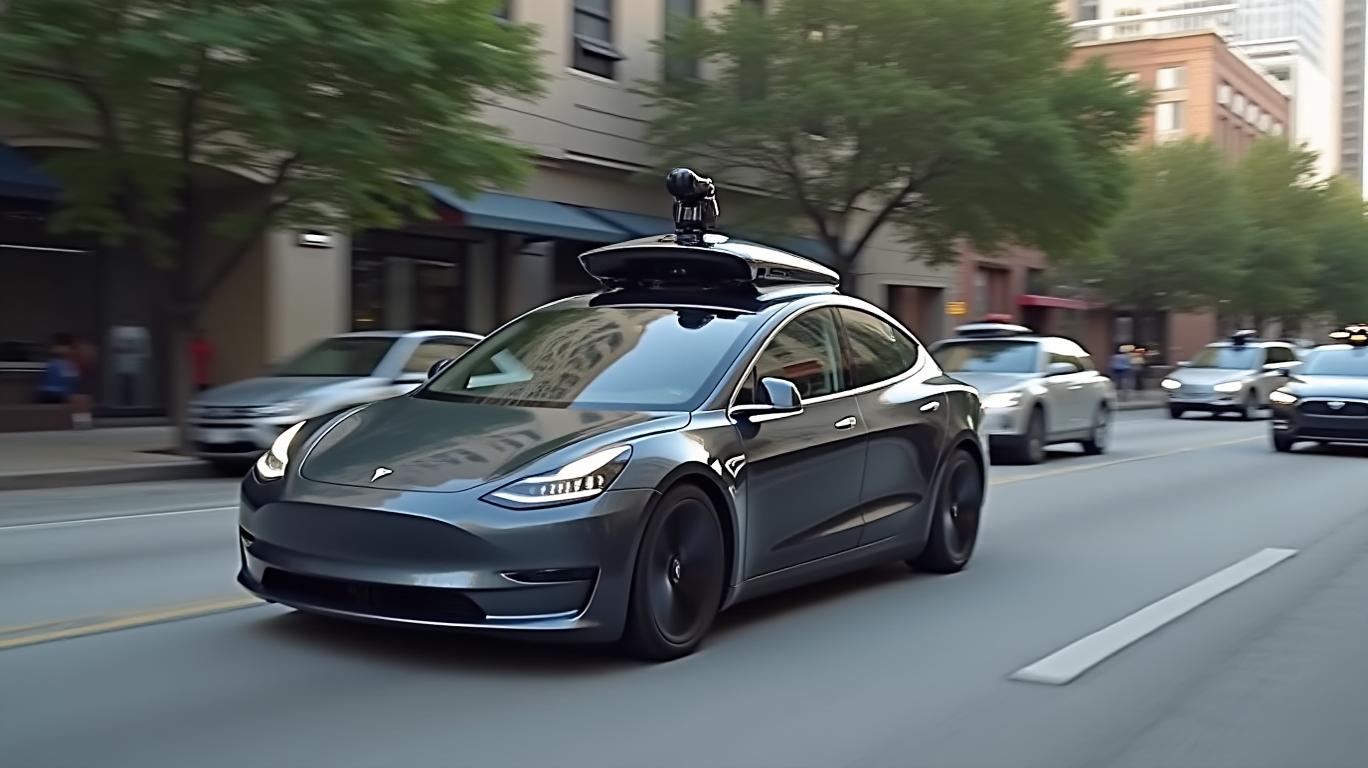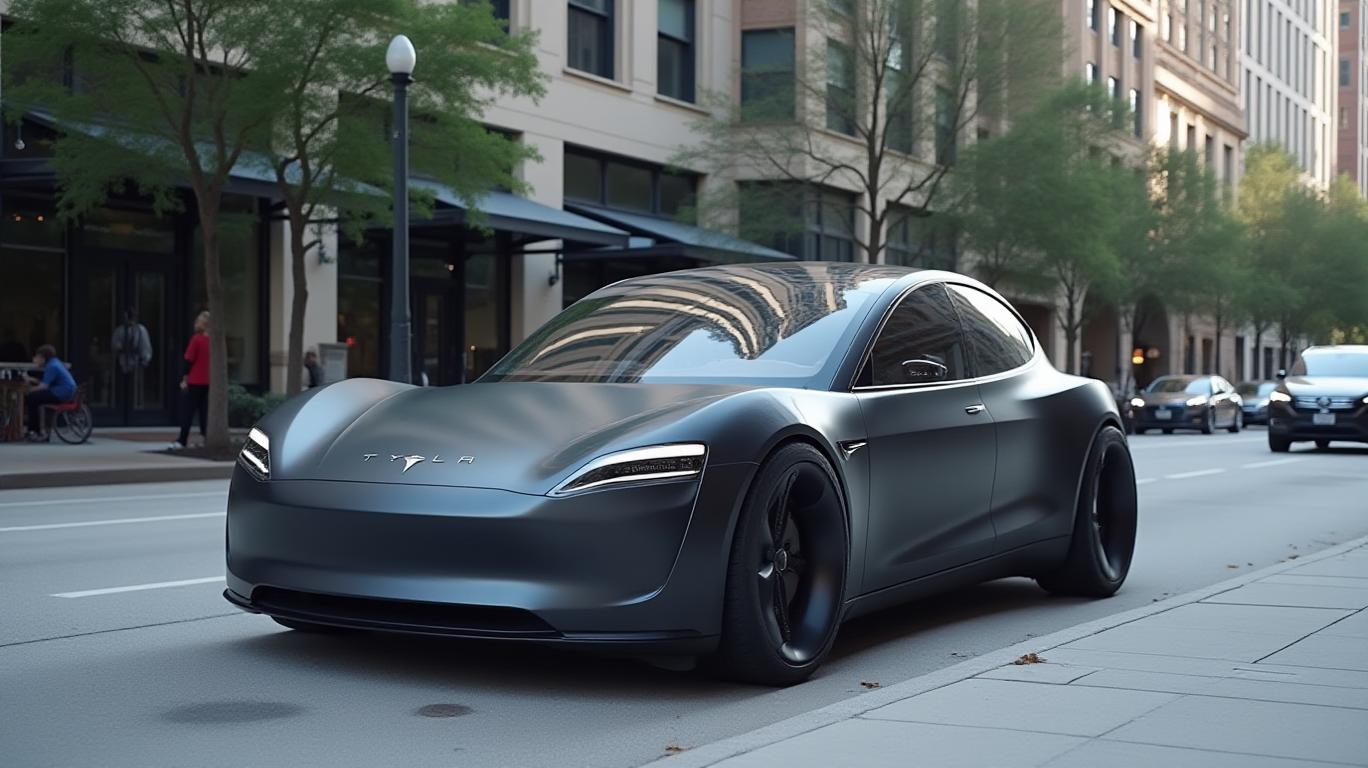Tesla's Autonomous Ambition: How Robotaxis Could Drive the Next Era of Growth
Elon Musk’s vision for Tesla’s autonomous future took center stage during the company’s Q1 2025 earnings call, with concrete details about its robotaxi rollout offering investors a roadmap for the next phase of growth. The announcement of a June 2025 launch in Austin, Texas, marks a pivotal moment for Tesla’s full self-driving (FSD) ambitions, positioning the automaker at the forefront of a transformative industry shift.

The Robotaxi Rollout: A Strategic Play for Dominance
Tesla’s robotaxi service will begin with a fleet of Model Y vehicles in Austin, Texas, leveraging the city’s progressive regulatory environment and Tesla’s nearby Gigafactory. Musk emphasized this as the first step in a broader rollout, with expansions planned for other U.S. cities later in 2025. By late 2026, Musk predicted millions of Teslas could be operating autonomously nationwide—a scale that could generate recurring revenue streams, reshaping Tesla’s financial profile.
The Model Y’s selection as the primary vehicle underscores its versatility and popularity. Tesla’s recent production shift to an updated Model Y, delayed slightly by factory retooling in Q1, did not disrupt the timeline. Musk hinted at future models “on track for start of production in 2025,” which could further diversify the robotaxi fleet, though specifics remain under wraps.
Autonomy: The “General Solution” Gaining Momentum
Tesla’s autonomy stack, designed as a “general solution” for any environment, is central to its robotaxi strategy. Unlike competitors relying on sensor-heavy, location-specific systems, Tesla’s approach prioritizes software scalability and camera-based vision, which Musk argues will ultimately be more cost-effective and adaptable. The Q1 earnings call reinforced confidence in this strategy, with Musk stating that autonomous rides will be paid services, directly contributing to revenue once scaled.
This contrasts sharply with Waymo and Cruise, which have adopted slower, geofenced approaches. Tesla’s path, while riskier, could offer a faster path to market dominance—if the technology delivers.
Financial Context: Navigating Near-Term Headwinds
Tesla’s Q1 results, however, highlighted near-term challenges. Revenue dipped to $19.3 billion, with automotive sales at $13.97 billion, as production halts for Model Y retooling and vandalism-related disruptions dented margins. Non-GAAP EPS fell to $0.27, and free cash flow hit $664 million, missing analyst expectations.
Yet Musk framed these as temporary setbacks, arguing that the robotaxi’s long-term potential overshadows short-term volatility. CFO Vaibhav Taneja echoed this, noting strong demand for the updated Model Y and FSD, which he called a “key differentiator” in a crowded EV market. Meanwhile, Tesla’s Powerwall 3 supply constraints signal enthusiasm for its energy ecosystem, which could underpin charging infrastructure for robotaxis.
Risks on the Horizon
Tesla isn’t without hurdles. Tariffs on imported components, particularly from Mexico and China, threaten margins. Musk acknowledged these pressures but emphasized Tesla’s localized supply chains and compliance with U.S. trade agreements (85% adherence to USMCA rules). Additionally, ongoing protests and brand controversies—dismissed by Musk as “vested interests in waste”—remain a reputational overhang.
The Bigger Picture: A Multibillion-Dollar Opportunity
If Tesla meets its 2026 target of millions of autonomous vehicles, the robotaxi service could generate $10 billion+ annually in recurring revenue—a significant uplift from its current $13 billion in automotive sales. Pair this with Tesla’s Energy division scaling to terawatt-hour storage levels, which could reduce charging costs for fleets, and the financial case strengthens further.
Moreover, the Optimus humanoid robots, set to be deployed in Tesla’s factories by 2025, could cut production costs and accelerate robotaxi assembly. Musk’s vision of one million Optimus units by 2030 hints at a future where automation fuels both manufacturing and mobility.
Conclusion: Betting on Autonomy’s Tipping Point
Tesla’s robotaxi plans are not just an add-on—they’re a strategic pivot to redefine transportation. With a June 2025 launch on track, a roadmap to scale across the U.S. by 2026, and Musk’s unwavering confidence in the autonomy stack, Tesla is positioning itself to capitalize on a market projected to reach $1.3 trillion by 2030.
While near-term financial headwinds and regulatory challenges loom, the data underscores Tesla’s resilience. The Model Y’s strong demand, FSD’s competitive edge, and a $19.3 billion revenue base (despite Q1’s dips) suggest the company remains a growth engine. For investors, the question isn’t whether autonomous vehicles will disrupt transportation—it’s whether Tesla can execute its vision at scale. If it does, the payoff could be monumental.










